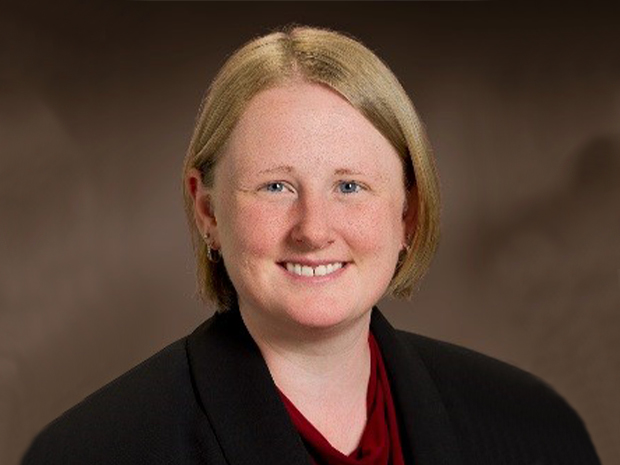On Dec. 19, 2019, Congress passed the Setting Every Community Up for Retirement Enhancement Act, known as the SECURE Act, as part of the appropriations bills that will fund the federal government through September 2020. The President is expected to sign the SECURE Act into law. This summary focuses on the financial and estate planning implications of the SECURE Act for high net worth individuals. For a summary that focuses on the Act’s potential implications for employers and plan sponsors, see SECURE Act Impacts Employer Plans
From the perspective of the high net worth individual, there are three provisions that could call for attention sooner rather than later.
First, individuals can contribute to traditional Individual Retirement Accounts (IRAs) after age 70½. With many people trying to stay in the workforce longer, that is probably a good thing.
Second, the Act delays required minimum distributions (RMDs) from traditional IRA’s and other qualified plans from age 70½ to 72. Unfortunately, for those who are on the cusp of taking their first RMD, this provision only applies to individuals who turn 70½ after Dec. 31, 2019. Still, when the delay in RMDs is taken together with proposed regulations that effectively, albeit slightly, reduce the amount of each RMD at a given age, individuals will be able to keep a little more money in those accounts for a little longer than under current law. As many individuals and their planners are aware, RMDs is among the more complex (and perplexing) topics in the tax law. This relatively straightforward description of the change to the start year for RMDs belies the complexity that the change will add to this topic.
Third, the Act will in many cases, eliminate the opportunity under current law to ‘stretch’ RMDs over a beneficiary’s life expectancy. The Act will force a beneficiary of a plan, including a Roth IRA, to withdraw the entire balance of the account within 10 years after the owner’s death. There is no mandated annual RMD. Just be sure the money is out by the 10th year. Importantly, the Act affects the RMDs from a Roth, not the tax-free character of those withdrawals. There are important exceptions to the 10-year rule. A beneficiary who is the deceased owner’s surviving spouse, or a minor child of the owner, or a disabled or chronically ill individual, or any other individual who is not more than 10 years younger than the owner, can still ‘stretch’ the RMDs over his or her life expectancy, though once the minor reaches majority, the 10-year rule comes in to play. This provision applies to owners who pass away after Dec. 31, 2019.
At first blush, this third provision is the most significant of the three from a planning perspective. However, the following example posed first under the current rules and then after the SECURE Act, suggests that it could be only of significance to a relatively small subset of the demographic.
An individual, whom we will call Matt, has $1.5 million in a traditional IRA. Matt has designated his wife Maura as beneficiary of the IRA. Matt turned 70½ this year and plans to take his first RMD by April 1, 2020. An important part of this story, and a key indicator of the significance of this new provision to any individual, is that Matt does not need the money that he will withdraw from the IRA. Therefore, he will take only the required amount and no more. Matt dies at age 75, survived by Maura, who is then 74. Maura rolls the IRA over to her own name and designates their daughter Maureen, age 40, as her beneficiary. Maura takes her RMDs in a timely fashion, again limiting the withdrawal to the amount required. She dies at 87. As long as Maureen begins taking RMDs within a year after her mother died, she can ‘stretch’ the account withdrawals over her then expected remaining lifetime. At an assumed return of 7% from her father’s age 70½ and RMDs limited to the required amount, the account would finally be depleted at Maureen’s projected life expectancy of age 84.
We should digress for a moment to note that many owners of large IRAs prefer to have them payable to trusts for their children that will preserve the funds from their children’s creditors (as well as their children’s improvidence) but still maintain the stretch. These individuals can use so-called ‘see-through’ trusts that will take the RMDs per the appropriate table and either just pay them out every year to the children/beneficiaries, a conduit trust or hold those RMDs in the trust for subsequent discretionary distributions, an accumulation trust.
Returning to the example, the SECURE Act would not change anything as far as Matt and Maura are concerned because the 10-year payout requirement does not apply to a surviving spouse. However, Maureen would no longer be able to stretch the withdrawals over her lifetime. The money would have to come out of the account within 10 years after her mother passed away. Assuming that 7% return and annual withdrawals equal to those taken in the first example, there would be approximately $2.74 million in the account at that time. If Maureen decides to leave the money in the account until it has to be withdrawn in the 10th year, there would be $3.762 million. It is not a stretch to assume that this is not the kind of planning that Matt and Maura had in mind. It is also likely to be more than a blip on Maureen’s radar screen as well.
Still, we have to keep the significance of this in perspective. As typical as this scenario may be in a high net worth setting, the reality is that many people who have these accounts will not be affected by or care at all about the loss of the stretch by their children. Again, their surviving spouses will still be able to spread the withdrawals over their lifetimes. Moreover, even if that is the case, they might have to take well more than the RMDs to live, thereby spending the accounts down over their lifetimes, if not before. In other words, the notion that there will be anything left is, well, a ‘stretch’. It is also quite possible that they think that if there is something left for the kids, a 10-year stretch is just fine.
Individuals whose plans, whether as taxpayers or as parents, are going to be significantly impacted by curtailment of the stretch IRA do have some things to consider and some options to explore:
- Individuals who currently plan to leave the IRA to a trust for the benefit of their children should consult with their tax advisors now. Their advisors can explain just how the Act will apply to their particular situation and, if necessary, what options they have for revamping the plan to be sure it aligns with their personal and tax objectives.
- Consider using Roth conversions to avoid RMDs for at least for one generation (the spouses/parents) so that the IRA can grow without diminution from those withdrawals and then the RMDs will come out to the children tax-free, albeit much faster than they anticipated. Individuals should ask their tax advisors to ‘run the numbers’ to see if paying the tax on conversion (preferably with money from outside the IRA) makes sense.
- Charitably inclined individuals may now have even more incentive to leave their traditional IRAs to charity. The IRA is ‘income in respect of a decedent’, which means that it is included in the owner’s taxable estate and income taxable to the beneficiary as the funds are withdrawn. For these reasons, charitably inclined individuals have long chosen to leave IRAs to charity and leave assets more favorably taxed at death to their children.
- A variation on the theme of charitable giving with the IRA is to leave it to a testamentary charitable remainder trust that would provide an income stream to the children for a certain term and then pass to charity. This technique would eliminate RMDs altogether. What’s more, the estate would be entitled to a deduction for the present value of the remainder projected to pass to the charity at the end pf the term.
- Use life insurance in lieu of the IRA. We do not mean to do that literally. We do mean that the individual would perhaps accelerate RMDs and direct the after-tax balance to an irrevocable life insurance trust (ILIT). The ILIT will have no RMDs. Of course, having estate tax free life insurance could be helpful in any event to provide liquidity for estate taxes, particularly on any significant IRA balances that pass to the children upon their parents’ death.
We will have more to say about the SECURE Act in future publications. For now, we urge individuals to consult promptly with their advisors about how these changes might affect their financial and estate planning.



